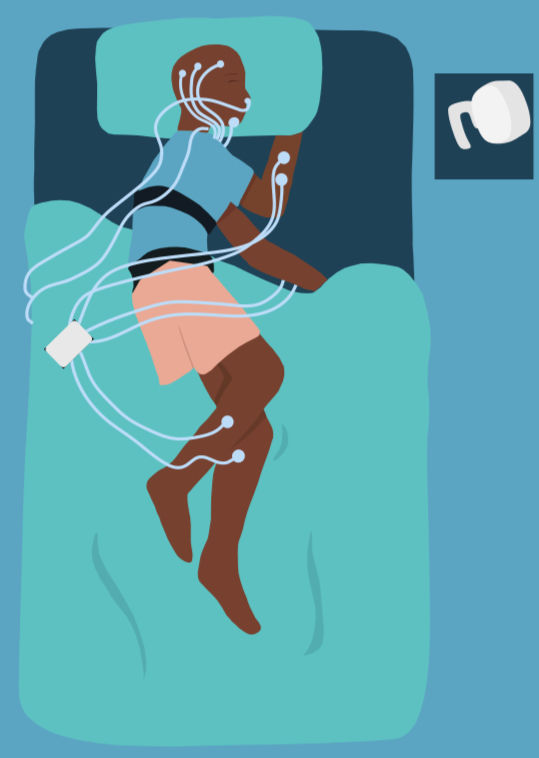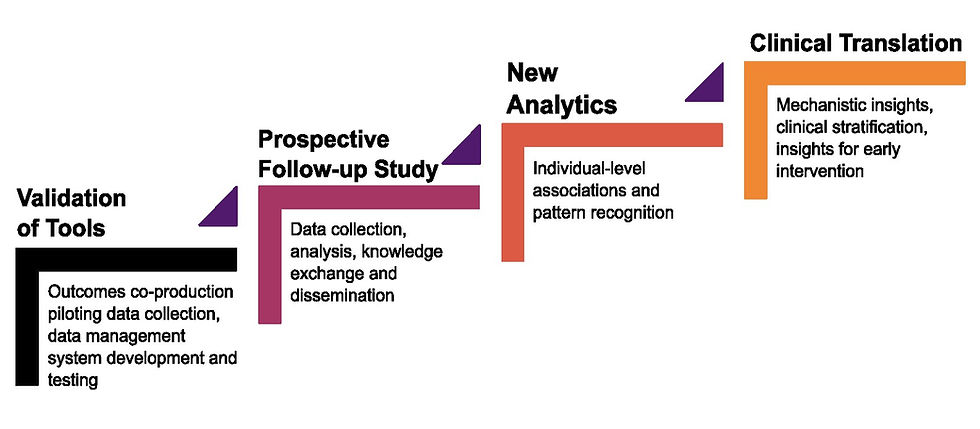Finding Our Rhythm: The Role of Circadian Science in Mental Health
- Emma Ryan
- Oct 20
- 4 min read
Updated: Oct 22
Research Spotlight Blog No.3
Emma Ryan is a Research Assistant at Maynooth University, Ireland, working on Work Package 1 of the AMBIENT-BD project, which explores the role of sleep and circadian rhythms in bipolar disorder. She holds a BSc in Psychology and a MSc in Psychology and Wellbeing. Her research to date has focused on the intersection between sleep and mental health, and she is now particularly interested in how biological rhythms shape wellbeing and mood. Emma is passionate about making mental health research accessible and translating scientific findings into meaningful insights for everyday life.
Sleep, Rhythms, and Mental Health
We have all felt the effects of a poor night’s sleep: the irritability, the grogginess, and the feeling of our brain working against us. For most of us, a few good nights of rest help us to bounce back quickly. However, for people living with bipolar disorder, sleep disruptions can be far more than an inconvenience; they can deeply influence mood and even trigger episodes of mania or depression.
As a Research Assistant working on the Ambient-BD project at Maynooth University, I’m learning more about how our internal clocks (the rhythms that guide our sleep, energy, and mood) and our mental health influence each other. Our aim is to find new, less intrusive methods of monitoring these patterns in real-world settings to better understand how daily rhythms shape wellbeing.
Circadian Rhythm Disruption in Bipolar Disorder
Our bodies run on natural 24-hour cycles known as circadian rhythms. These rhythms tell us when to eat, when to feel tired or alert, and even when our mood tends to rise and fall. They are influenced by factors like light, activity, and social cues- all the elements that make up our daily routines.
When these rhythms fall out of sync due to factors like stress, jet lag, irregular sleep patterns, or exposure to artificial light, we might notice low energy or difficulty concentrating. However, for people with bipolar, these disruptions can be especially significant. Research shows that up to 70% of individuals with bipolar disorder experience sleep and circadian disruptions, which are strongly linked to mood episode relapse. Better understanding these patterns is crucial for improving mental health outcomes in this population.
The Challenge with Traditional Research
The current “gold standard” methods for studying sleep and circadian rhythms are both complex and time-intensive. Polysomnography (PSG) tests measure sleep architecture and require individuals to sleep attached to wires and sensors that record brain and body activity. The dim light melatonin onset (DLMO) test involves collecting saliva samples every hour under carefully controlled lighting conditions to measure the body’s internal clock.
While these techniques are invaluable for understanding biological processes, they only capture brief snapshots of time and are not practical for long-term, real-world monitoring. If we want to understand how daily routines affect mental health, we need tools that can measure these patterns passively and continuously over long periods of time.
Towards a New Approach: The Ambient-BD Project
Our team is exploring how impulse radio ultra-wideband (IR-UWB) radar sensor technology can help us to measure sleep and circadian timing without the wires or lab visits. These radar sensors sit on a bedside table in participants’ homes and passively detect movements and breathing patterns to estimate when someone is asleep or awake, and how their daily routines may change over time.
In our study, participants with and without bipolar disorder take part for 90 days. They use radar sensors and wrist-worn activity monitors, keep short daily sleep diaries, and complete PSG and DLMO tests at the beginning and end of the study period.

These measures allow us to compare the new radar-based approach with the gold-standard methods to see how well it captures sleep and circadian timing in real-world settings. It also means that participants can go about their normal lives while we gather continuous data that would otherwise be impossible to collect in a lab.
As a Research Assistant, I’m involved in many parts of the study, from meeting participants and setting up the sleep tests in their homes to collecting and organising data from the devices. It has been fascinating to work directly with participants to see how technology is opening new doors for understanding mental health. We hope that, in the future, these tools might help detect early signs of mood changes or relapse, supporting more personalised care for people with bipolar disorder.

Staying in Sync with Science
Circadian science is showing us that there is more to mental health than just the mind. By paying attention to our body’s rhythms, and by making it easier for clinicians and researchers to track them, we can move towards a more holistic understanding of wellbeing. Studying circadian rhythms in bipolar disorder can also teach us lessons that apply to everyone- the importance of regular sleep, natural light, and moments of rest in a busy world. It’s a reminder that self-care is not just about what we do in moments of crisis, it’s about noticing the daily patterns that shape our lives and learning how to keep them balanced.
For me, working on Ambient-BD has highlighted the significance of connection; between sleep and mood, between research and lived experience, and between science and self-care. Ultimately, we hope that this work will help people with bipolar disorder to find steadier rhythms in everyday life.
Blog by Emma Ryan
AMBIENT-BD is a multi-institutional project exploring the use of innovative ambient and passive data collection methods for sleep and circadian rhythms to inform future approaches early intervention, clinical practice and personalised medicine in bipolar disorder. You can find out more about AMBIENT-BD here.



Comments